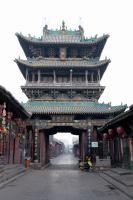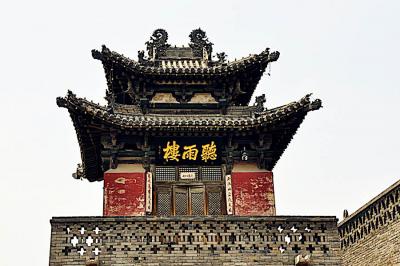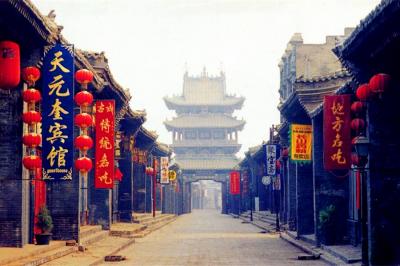Pingyao Introduction
 Pingyao is an exceptionally well-preserved example of a traditional Han Chinese city, founded in the 14th century. Its urban fabric shows the evolution of architectural styles and town planning in Imperial China over five centuries. Of special interest are the imposing buildings associated with banking, for which Pingyao was the major center for the whole of China in the 19th and early 20th - UNESCO World Heritage Website
Pingyao is an exceptionally well-preserved example of a traditional Han Chinese city, founded in the 14th century. Its urban fabric shows the evolution of architectural styles and town planning in Imperial China over five centuries. Of special interest are the imposing buildings associated with banking, for which Pingyao was the major center for the whole of China in the 19th and early 20th - UNESCO World Heritage WebsiteAs a recently famous town in Shanxi Province, Pingyao is one of the best-preserved towns in China. First built in the reign of King Xuan (827 - 782 B.C.) of the Western Zhou Dynasty, Pingyao boasts the ancient city walls, residences, government offices and stores of the Ming (1368-1644) and Qing (1644-1911) dynasties in its good and original condition. Up to now, the town is still well preserved the same as when it was the county seat of the Ming and Qing dynasties.
Strategically located in the center of Shanxi Province, Pingyao is about 100km south of the capital city of Shanxi - Taiyuan with railways and highways connecting the cities of North China like Taiyuan, Beijing and Xian. Encompassing an area of 1,260 square kilometers, Pingyao has a population of 480,000.
Pingyao is regarded as the birthplace of modern banking system of China. Chinese banks were originally called "Piao Hao". Richangsheng is the first "Piao Hao" offering financial services in town, and China. Therefore, it became the ancestor of all Chinese Banks. During a long period of late 19th century and early 20th century, merchants from Shanxi Province nearly dominated all finance in China.
Tourism has become its major industry since 1990's. The local government relocated more than 20,000 residents out of the old town from 2002-2006 for the better protection of the town. Thirty polluting factories around the city have been closed, with 30 chimneys and more than 400 coke furnace being demolished at the same time.
In 1997, UNESCO inscribed the city on the World Cultural Heritage list.

